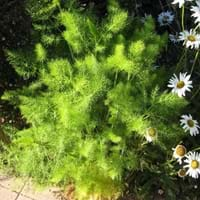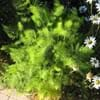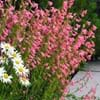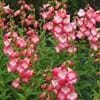Life Span
Perennial
Biennial and Perennial
Type
Flowering Plants, Spices
Vegetable
Origin
Mediterranean, Southwest Asia
Europe, Western Asia
Types
Star anise and more
Not Available
Number of Varieties
Not Available
Habitat
Thickets, Woods
waste ground, wastelands
USDA Hardiness Zone
4-9
4-9
Sunset Zone
H1, H2, 1a, 1b, 2a, 2b, 3a, 3b, 4, 5, 6, 7, 8, 9, 10, 11, 12, 13, 14, 15, 16, 17, 18, 19, 20, 21, 22, 23, 24
A1, A2, A3, H1, H2, 1a, 1b, 2a, 2b, 3a, 3b, 4, 5, 6, 7, 8, 9, 10, 11, 12, 13, 14, 15, 16, 17, 18, 19, 20, 21, 22, 23, 24
Habit
Upright/Erect
Rosette/Stemless
Flower Color
White
Yellow
Flower Color Modifier
Not Available
Bicolor
Fruit Color
Gray Green, Tan
Brown, Black
Leaf Color in Spring
Green
Green
Leaf Color in Summer
Green
Green
Leaf Color in Fall
Green
Green
Leaf Color in Winter
Green
Not Available
Plant Season
Summer
Summer
Sunlight
Bright direct sunlight
Full Sun
Type of Soil
Loamy, Sandy, Well drained
Loam
The pH of Soil
Neutral, Slightly Acidic
Neutral
Soil Drainage
Well drained
Well drained
Bloom Time
Late Summer, Summer
Summer
Tolerances
Soil Compaction
Drought
Where to Plant?
Ground
Ground, Pot
How to Plant?
Seedlings
Seedlings
Plant Maintenance
Medium
Medium
Watering Requirements
Allow soil to be completely dry in between waterings, Medium, Water twice a day in the initial period
Average Water Needs, Do Not over Water, Keep the ground moist but not water-logged
In Summer
Lots of watering
Lots of watering
In Spring
Moderate
Moderate
In Winter
Average Water
Average Water
Soil pH
Neutral, Slightly Acidic
Neutral
Soil Type
Loamy, Sandy, Well drained
Loam
Soil Drainage Capacity
Well drained
Well drained
Sun Exposure
Bright direct sunlight
Full Sun
Pruning
Prune regularly
Remove damaged leaves, Remove dead branches, Remove dead leaves
Fertilizers
All-Purpose Liquid Fertilizer
All-Purpose Liquid Fertilizer
Pests and Diseases
Alternaria leaf blight, Aphids, Cutworms, Downy mildew, Powdery mildew, Rust
Aphids, Armyworm, Cutworms, Downy mildew, Pitch canker, Red blotch
Plant Tolerance
Drought
Drought
Flower Petal Number
Single
Not Available
Fragrant Bark/Stem
Yes
Yes
Foliage Texture
Fine
Fine
Foliage Sheen
Matte
Matte
Attracts
Butterflies
Butterflies
Allergy
Respiratory problems, Skin irritation, Skin rash
Stomach burn
Aesthetic Uses
Not Available
Not Available
Beauty Benefits
Not Available
Blood purifying, Good for skin
Environmental Uses
Air purification
Air purification
Medicinal Uses
Asthma, constipation, Cough
Aphrodisiac
Part of Plant Used
Flowers, Leaves
Root
Other Uses
Oil is used for aromatherapy, Oil is used in perfume, soaps, creams, etc., Used for flavoring in Liquors, dairy products, gelatins,puddings, meats, candies, etc., Used for fragrance, Used as a spice
Food for animals, Used as a nutritious food item
Used As Indoor Plant
No
Yes
Used As Outdoor Plant
Yes
Yes
Garden Design
Edging, Feature Plant
Edible, Herb, Vegetable
Botanical Name
Pimpinella anisum
PASTINACA sativa
Common Name
Anise
Parsnip
In Hindi
सौंफ़ का पौध
चुकंदर
In Greek
γλυκάνισο
Είδος δαυκίου
In Portuguese
anis
cherivia
Phylum
Magnoliophyta
Magnoliophyta
Class
Magnoliopsida
Magnoliopsida
Clade
Angiosperms, Asterids, Eudicots
Angiosperms, Asterids, Eudicots
Tribe
Not Available
Not Available
Subfamily
Not Available
Not Available
Number of Species
Not Available
Importance of Anise and Parsnip
Want to have the most appropriate plant for your garden? You might want to know the importance of Anise and Parsnip. Basically, these two plants vary in many aspects. Compare Anise and Parsnip as they differ in many characteristics such as their life, care, benefits, facts, etc. Every gardener must at least have the slightest clue about the plants he wants to plant in his garden. Compare their benefits, which differ in many ways like facts and uses. The medicinal use of Anise is Asthma, constipation and Cough whereas of Parsnip is Aphrodisiac. Anise has beauty benefits as follows: Not Available while Parsnip has beauty benefits as follows: Not Available.
Compare Facts of Anise vs Parsnip
How to choose the best garden plant for your garden depending upon its facts? Here garden plant comparison will help you to solve this query. Compare the facts of Anise vs Parsnip and know which one to choose. As garden plants have benefits and other uses, allergy is also a major drawback of plants for some people. Allergic reactions of Anise are Respiratory problems, Skin irritation and Skin rash whereas of Parsnip have Stomach burn respectively. Having a fruit bearing plant in your garden can be a plus point of your garden. Anise has no showy fruits and Parsnip has no showy fruits. Also Anise is flowering and Parsnip is not flowering . You can compare Anise and Parsnip facts and facts of other plants too.





